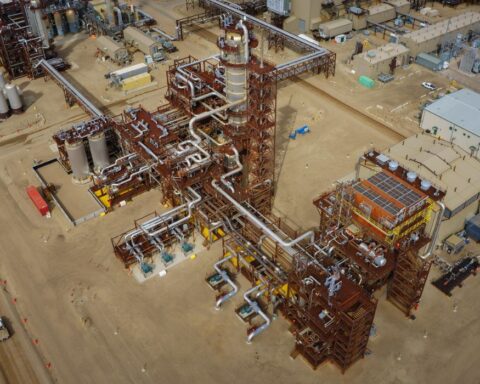Devastating wildfires and floods this year have highlighted the risks arising from the lack of public accountability for natural assets in Canada. Recognizing these assets in public-sector financial statements is essential for their effective management.
Natural assets (such as rivers, wetlands and forests) are neither traded nor routinely valued, yet they provide critical services like helping manage worsening floods, droughts and heat waves, as well as storing carbon to slow climate change. These services are financially valuable. For example, an Institute for Sustainable Finance report estimates that Canadian wetlands alone provide services worth approximately $225 billion annually, equivalent to around 8% of Canada’s gross domestic product.
However, over-consumption of open access, seemingly “free” services from natural assets can lead to continued and undocumented degradation of such assets, as comprehensively discussed by the Dasgupta Review in the U.K. and encapsulated in concepts like the “tragedy of the commons” and negative externalities.
Recognition of natural assets in public-sector financial statements is long overdue. A 2021 Intelligence Memo explored the urgent need to report on natural assets. That same year, senior executives and leaders from nearly 70 organizations signed a joint letter urging Canada’s Public Sector Accounting Board (PSAB) to work toward “getting nature on the balance sheet” of public sector entities. Today, the path to formally recognizing natural assets has become clearer.
This involves adopting internationally aligned standards to account explicitly for the value of natural assets. The International Public Sector Accounting Standards Board (IPSASB) has made significant progress on its multi-year natural resources project and is expected to publish a draft international standard this fall to propose criteria for recognizing “natural resource assets” in financial statements and requirements for note disclosures.
RELATED:
How letting water be water can lead to better climate resilience
Can swapping debt for nature save the Amazon? Peru is giving it a go
Without a healthy blue economy there will be no green recovery
Additionally, IPSASB has updated its international standard for the measurement of the financial value of assets, introducing “current operational value” as a method for quantifying the “service potential” of natural assets. This method can include the ecosystem services provided by natural assets.
In Canada, where 80% of the land is publicly owned, PSAB has indicated its intent to follow IPSASB’s guidance, making the adoption of a similar standard for Canada likely. This would allow the inclusion of natural assets that meet certain criteria in public-sector financial statements, rectifying their current exclusion.
Momentum is building in Canada ahead of official standards to provide the data necessary to more effectively measure the financial value of natural assets. Nationally, the Census of Environment – led by Statistics Canada – is actively compiling Canada’s natural capital accounts, with geospatial datasets already available for urban greenness and salt-marsh habitat. In 2023, specifications for natural asset inventories were published as a national standard of Canada.
At the local level, more than 150 local governments are already inventorying, assessing, valuing and managing their natural assets. Cities like Calgary and Mississauga and are making quantitative, albeit unaudited, disclosures related to natural assets in their financial statements. Yet these encouraging local-government approaches lack uniformity and encompass less than 5% of the total number of Canadian municipalities. National standards are essential to achieve consistency and broad-based adoption in the financial reporting of natural assets.
Important policy considerations will arise when (not if) Canada adopts public-sector accounting standards for natural assets that ensure transparent, consistent and routine reporting on their value.
Public sector recognition of natural assets will inevitably affect the private sector, particularly public–private interactions, such as land development, which often degrade and diminish the financial value of these assets. The valuation of natural assets may also affect how private sector entities consider managing “nature-related transition risks” – actions to protect or restore negative environmental impacts.
The work of the International Sustainability Standards Board, building on the Taskforce on Nature-Related Financial Disclosures, will be pivotal in setting sustainability standards that address nature-related risks from a financial materiality perspective. Accordingly, this work will need to consider the value of natural assets as they are formally recognized.
Also, it is essential to shape accounting policy for numerous lands with treaty rights through ongoing engagement with and learning from Indigenous Peoples.
The IPSASB is to be congratulated on its leadership in this crucial domain of valuing natural assets and ecosystem services. We eagerly await updates to Canada’s public-sector accounting standards.
Joanna Eyquem is managing director of climate-resilient infrastructure at the Intact Centre on Climate Adaptation. Peter van Dijk and James K. Stewart are senior fellows at the C.D. Howe Institute.
This piece originally appeared as a C.D. Howe Institute Intelligence Memo. It has been edited to conform with Corporate Knights style.







